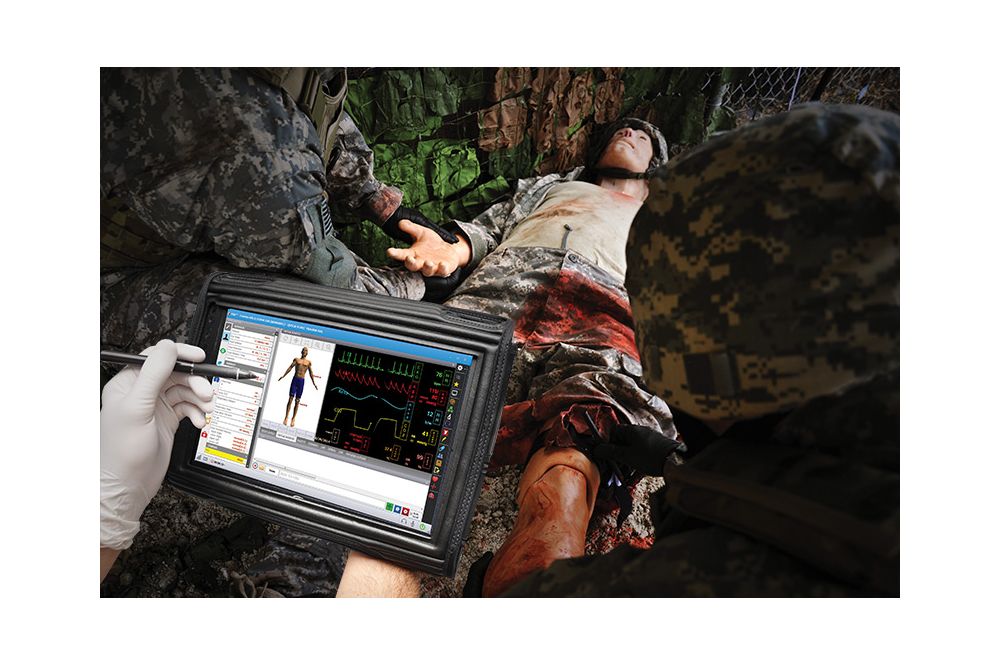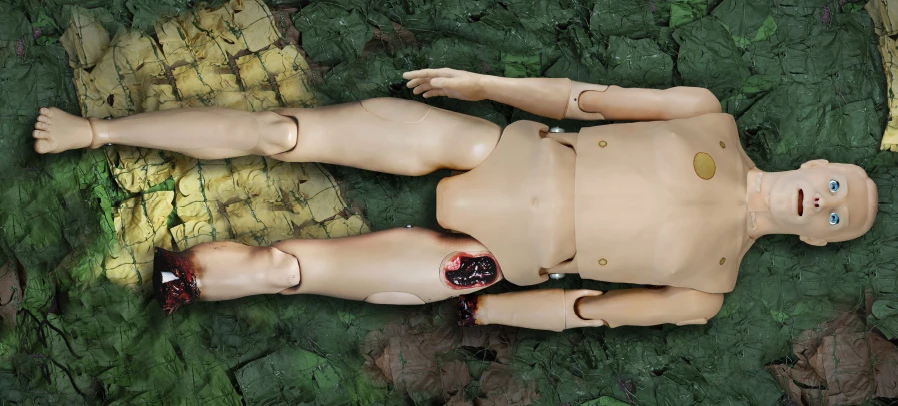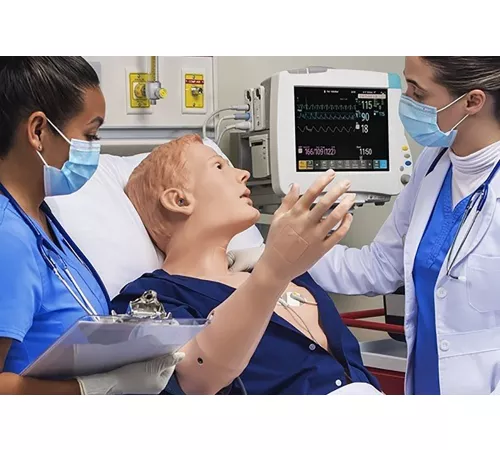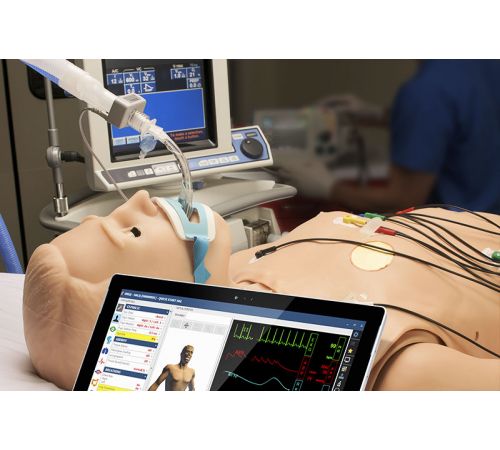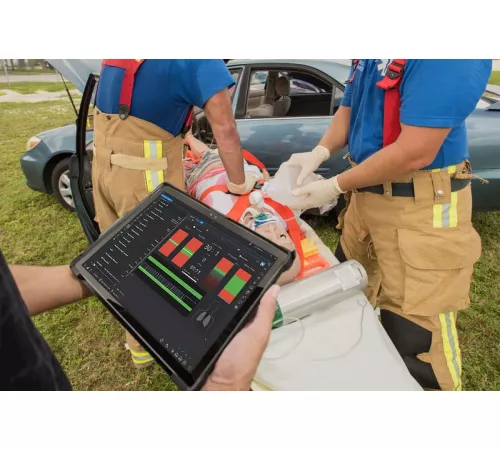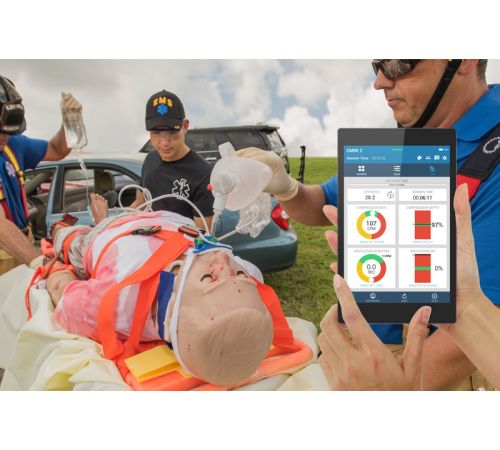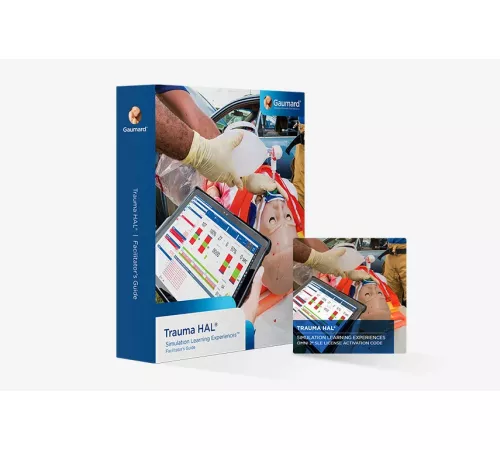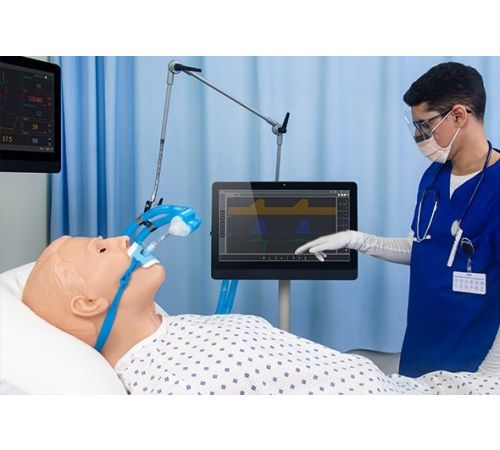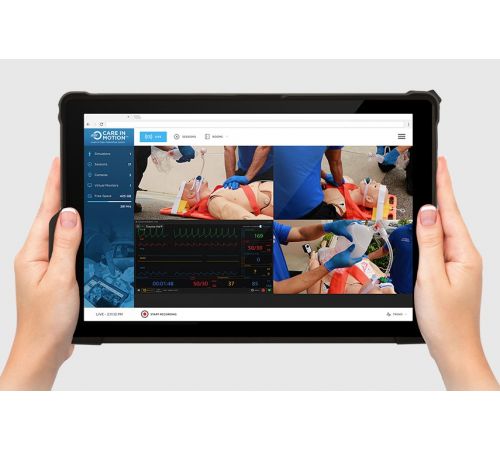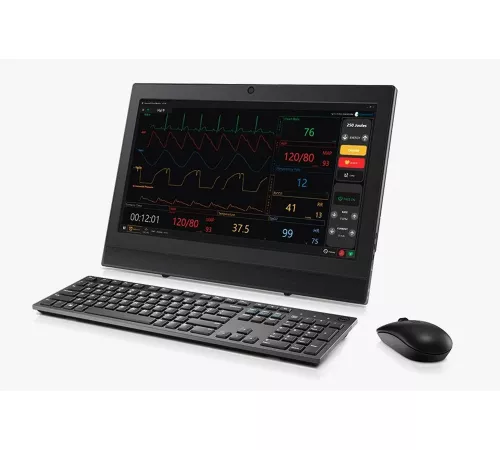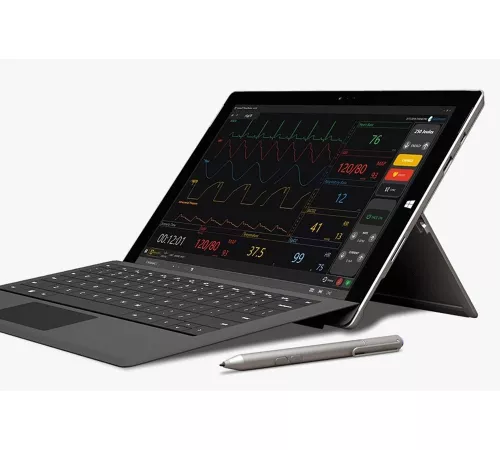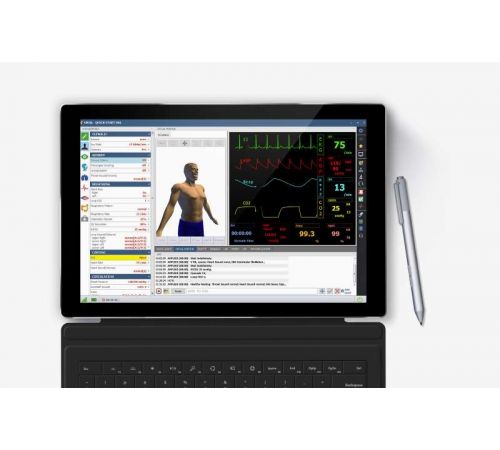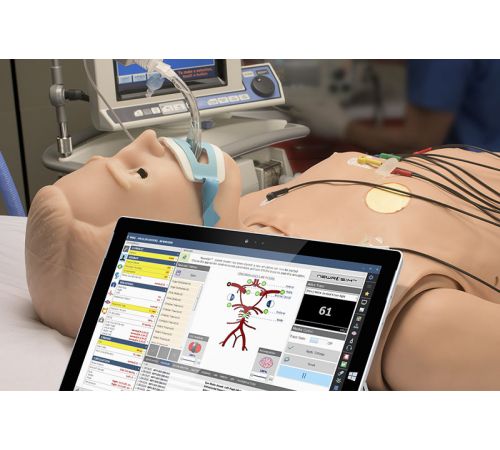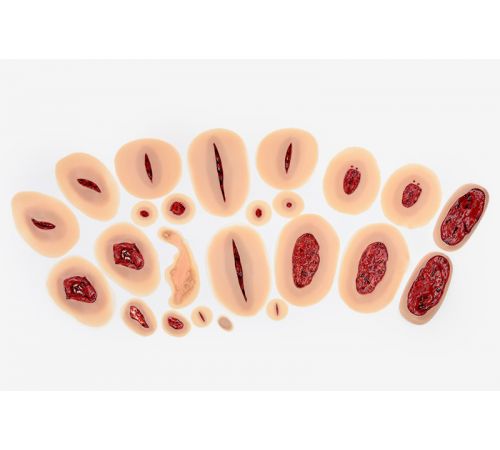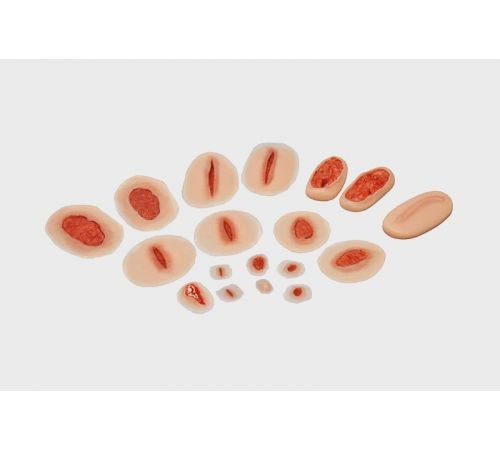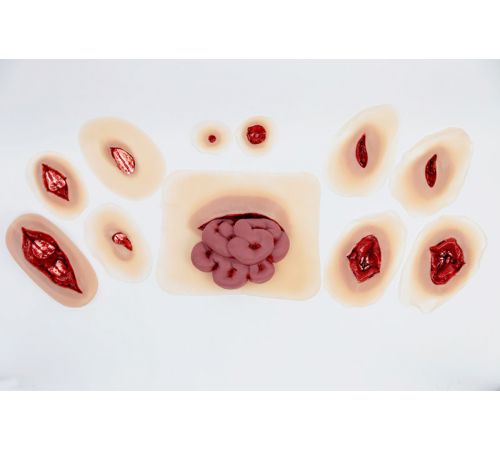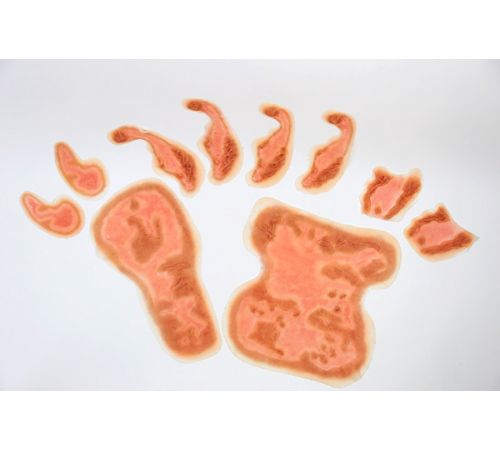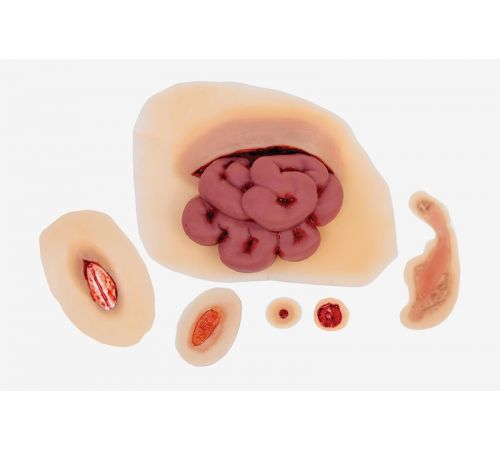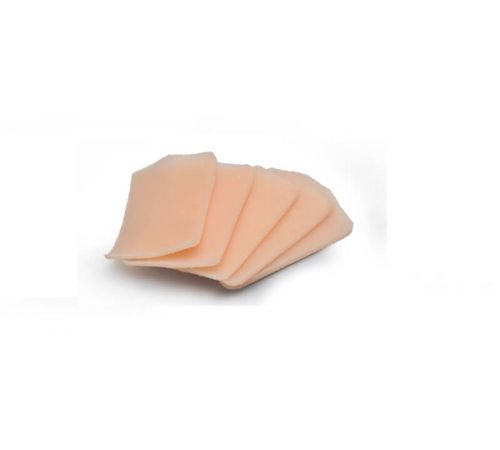Trauma HAL®
Model: S3040.100
Rugged and Resilient Trauma Simulator
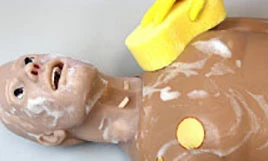
Decontamination Capable
Fully functional during soap and water decon spray procedure.

Liquid Secretion
Independent liquid secretion from ears, eyes, and mouth.
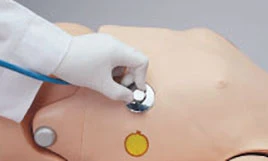
Heart and Lung Sounds
Multiple realistic heart sounds and anterior lung sounds.
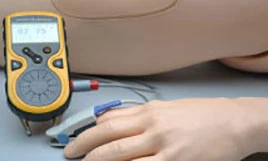
Oxygen Saturation
Oxygen saturation can be measured using real equipment.

Cyanosis
Cyanosis and vital signs respond to physiologic condition and interventions.
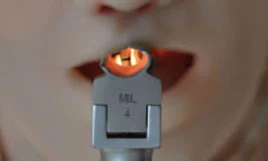
Programmable Airway
Programmable airway: tongue edema, laryngospasm, and pharyngeal swelling.
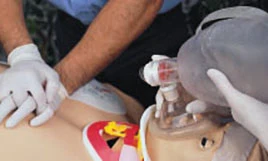
CPR Sensors
Sensors detect and log ventilations and compressions. Includes eCPR with UNI® software.
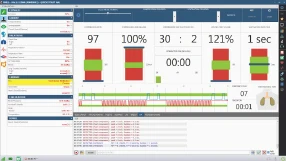
eCPR™ Monitoring
Monitor and assess CPR performance in real-time, simulate perfusion dependent on effectiveness, and export performance reports for debriefing.
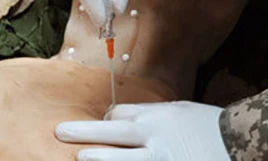
Needle Decompression
HAL® features palpable ribs. Participants can locate the 2nd intercostal space for bilateral needle decompression. Sensors detect and log needle insertion and log the action.

Trauma Arm and Leg
Arteries bleed as a function of BP + HR specified on the wireless tablet PC. Bleeding ceases when a tourniquet is applied 2” above the wound or between 1” or 2” above the joint. Actions are logged.
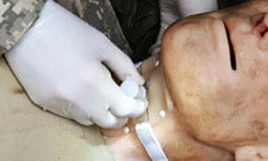
Surgical Cricoid
Perform lateral and medial incisions, then use a trach hook just like combat medics to lift the cricoid for airway assessment and insertion of a trach tube.
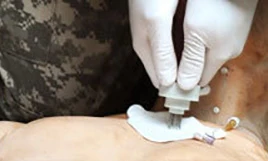
FAST-1 Sternal I/O
Use FAST-1 Locator and position it below the sternal notch; sites are replaceable and either accept medications or can be used to collect fluids.

Tetherless
HAL® is tetherless and wireless and fully responsive during transport 1. Tetherless technology allows the communications, compressor, and power supply to be inside HAL®, eliminating external tubes and wires.
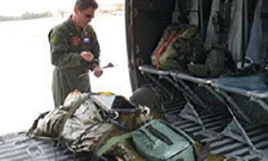
Tested
Trauma HAL® is based upon the proven technology found in the HAL® 3000, which was independently tested and approved. MIL-STD tests included vibration, EMI testing for avionics, high and low temperatures, humidity, rapid decompression at 45000 feet, explosive atmospheres, and flight testing in fixed-wing and rotary-wing aircrafts.

Realistic
Streaming voice and prerecorded verbal responses in any language. Difficult airway with tongue edema and pharyngeal swelling. Chest rise and fall respond to commands from wireless tablet PC. Palpable ribs. Height 178cm/70in. Radial, brachial, carotid, and femoral pulses operate continuously and are dependent upon blood pressure, etc.
Trauma with BleedSmart™
HAL’s arteries bleed as a function of blood pressure and heart rate specified on wireless tablet PC. Sensors in his arm and leg respond to applied pressure and stop bleeding when a tourniquet is applied correctly; his bleeding wounds at axilla and groin also respond to applied pressure and can be packed using combat gauze.
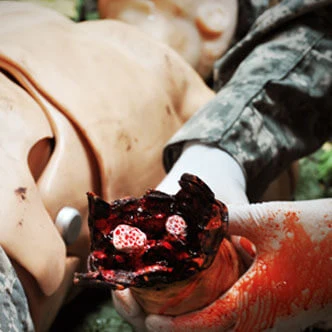
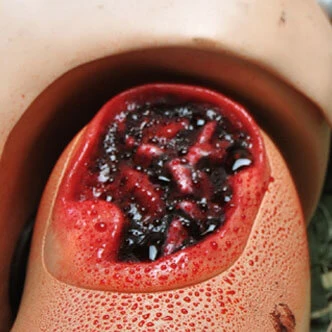
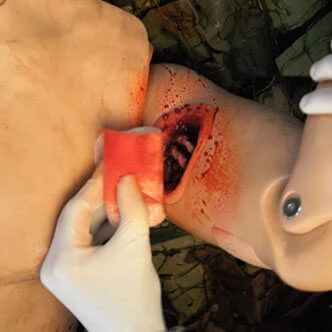
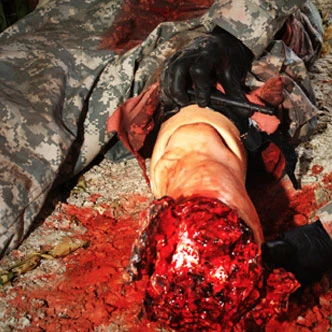
UNI® Software + Rugged Tablet is Included with HAL®
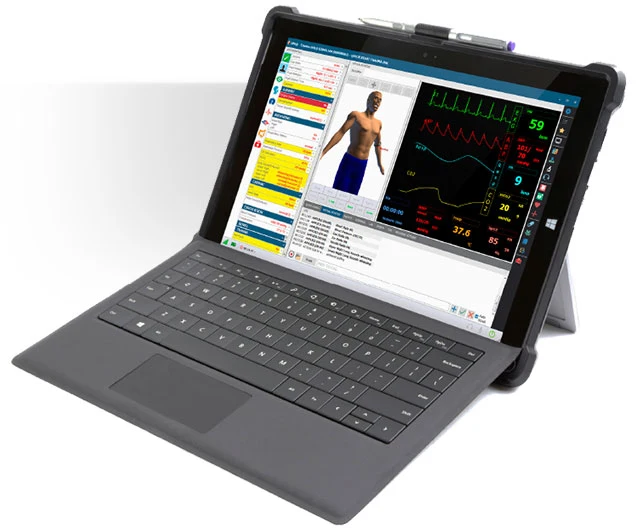
Features
- Rugged. The instructor’s tablet PC includes a rugged “bump” case perfect for field conditions.
- Streaming Audio. Be the voice of Trauma HAL®; hear responses at distances to 150 ft.
- Versatile Interface. Expand windows to include status, palettes, scenario, branching scenario, actions, log, monitors, speech, medication, and quick meds.
- Simple Interface. Physiologic parameter groups include airway, breathing, cardiac, cephalic, and circulation.
- Tetherless. Tetherless and wireless; fully responsive during transport 1
- Tested. Trauma HAL® is based upon the proven technology found in the HAL® 3000, which was independently tested and approved. MIL-STD tests included vibration, EMI testing for avionics, high and low temperatures, humidity, rapid decompression at 45000 feet, explosive atmospheres, and flight testing in fixed-wing and rotary-wing aircrafts
- Full body adult, 70 inches (178 cm) / 88 lbs. (40 kg)
- Rugged shoulder and hip joints allow dragging and carrying
- Splash-proof for CBRNe water spray decontamination
- Self-contained design; all operating components and blood reservoirs stored inside the body
- Tetherless and wireless; fully responsive during transport 1
- Fully operational on battery power for up to 10hrs (AC power supported) 2
- Interchangeable trauma/healthy lower arms and legs
- Designed for fast scenario resets with automatic self-refilling reservoir system
- Ruggedized for outdoor climate
- Blinking eyes with reactive pupils
- Software controlled fluid secretion at ears, eyes, and mouth
- Mild and severe convulsions
- Wireless streaming audio; be the voice of Trauma HAL and hear responses at distances up to 150 ft. 1
- Library of prerecorded responses
- Programmable custom verbal responses in any language
- Head tilt/chin lift
- Naso/orotracheal intubation: ETT, LMA, King LT
- Retrograde intubation
- Fiberoptic intubation
- Programmable difficult airway: tongue edema and pharyngeal swelling
- Laryngospasm with tight seal preventing intubation
- Surgical airway for cricothyrotomy, tracheostomy, and tracheal hook exercises
- Supports suctioning liquids from the airway and lungs
- Visible gastric distention with esophageal intubation
- Visible chest rise with BVM
- Ventilation detection
- Shallow and deep needle decompression with audible hiss and needle placement detection up to 3.25in.
- Unilateral chest rise and right mainstem intubation
- Spontaneous chest rise and fall with normal and abnormal respiratory patterns
- Selectable anterior lung sounds
- Bilateral chest tube insertion
- eCPR™ Real-time CPR performance monitoring
- Time to CPR
- Compression depth/rate
- Chest recoil
- Compression interruptions
- Ventilation rate
- Excessive ventilation
- Time to defibrillation
- Smart CPR voice coach
- Real end-tidal CO2 capability (option S3040.100.078)
- Durable chest recoil design
- Programmable cyanosis
- Measure blood pressure using a real blood pressure cuff
- Detectable oxygen saturation using real OSAT monitors
- Antecubital IV access
- Bilateral carotid, radial, brachial (antecubital fossa), femoral, popliteal, and pedal pulses
- Blood pressure-dependent pulses
- Sternal I/O infusion supports F.A.S.T.1
- Tibia I/O access
- Bilateral deltoid and quadriceps IM injection sites
- Internal fluid bladder with male genitalia for catheterization
- Bowel sounds in four quadrants
- Selectable normal and abnormal heart sounds
- Preprogrammed ECG rhythm library with customizable variations
- 4-Lead ECG monitoring using real equipment (12-lead option available item S3040.100.120)
- Defibrillation and pacing using real energy
- Quadruple trauma limbs: Interchangeable trauma lower arms and legs included
- Bleeding axilla and groin wounds detect applied pressure
- Trauma site arterial bleeding synched with heart rate and blood pressure
- Blood pressure control bleeding rate
- Arm and legs tourniquet sensors
- Pressure on femoral artery reduces or stops distal bleeding in leg
- On-board 1.5 Lt. blood reservoir
- Automatic self-refilling reservoir system
- On-screen blood loss monitor and reservoir level

- Trauma HAL® S3040.100
- Wireless tablet PC, protective “bump” case, and UNI software license
- RF Communications Module
- Battery charger/Power supply
- L/R Healthy lower arms and legs
- L/R Trauma lower arms and legs
- Axilla and groin wound inserts
- Replacement surgical tracheas
- Soft carrying case
- Hands-free blood refill bag
- User Manual
- 1-year standard warranty
- 2, 3, 5-year warranty plans also available
1. Maximum wireless range will vary depending on environmental factors and conditions.
2. Battery life estimates dependent on active features and settings; results may vary.
Priced without options, discounts, or special offers. Taxes and other fees not included. Extended service plans, product installation, and training services are available. Product design and price subject to change without notice. All trademarks and/or copyright materials are the property of their respective owners. © 2020 Gaumard Scientific. Patented; other patents pending. All Rights Reserved.
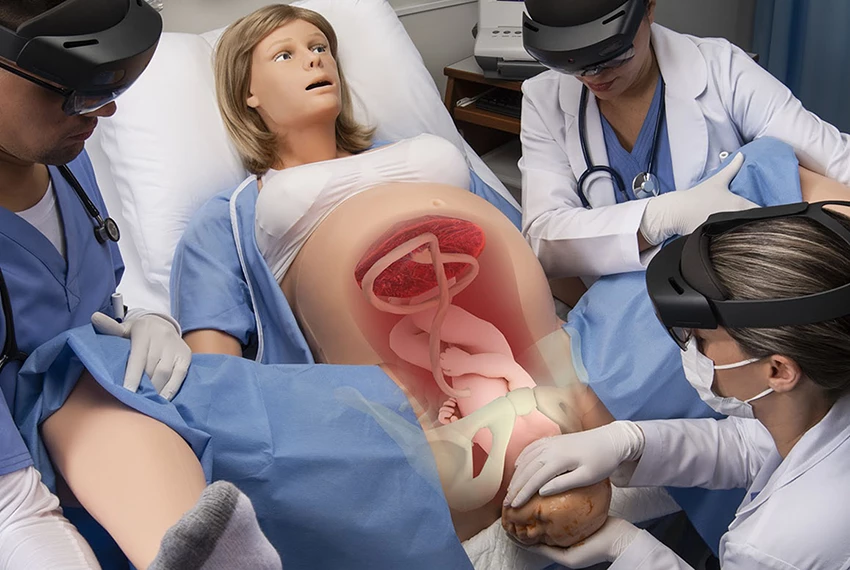
Bridging the gap between theory and practice.
By synchronizing holograms with the physical world, Obstetric MR allows learners to see inside VICTORIA and observe the dynamic physiology underlying difficult deliveries to promote deeper learning. Wireless connectivity supports up to 6 participants, with each observing their unique vantage point.
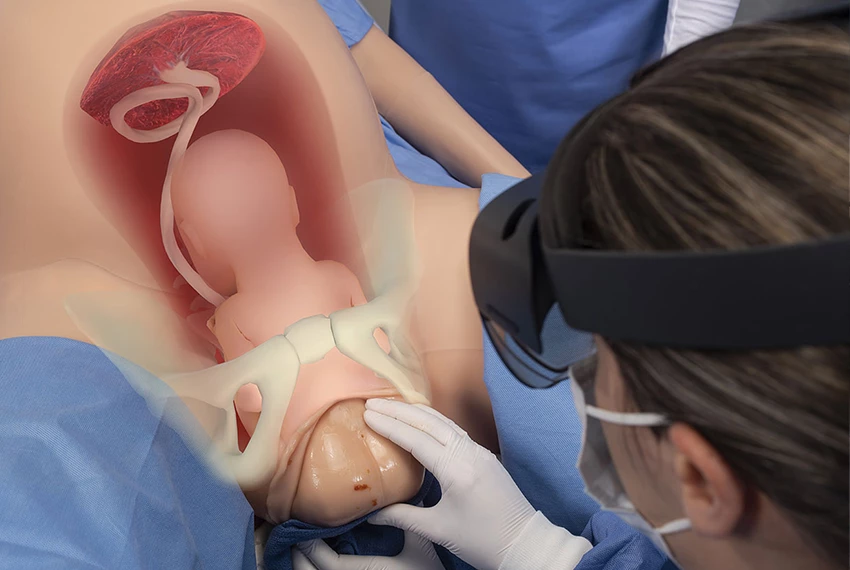
Seamless and powerful scenario integration.
Obstetric MR adds a new layer of learning to normal vaginal birth, shoulder dystocia, and breech scenarios. It integrates seamlessly with VICTORIA’s new Simulation Learning Experiences childbirth scenarios as well as your custom scenarios and on-the-fly operation.
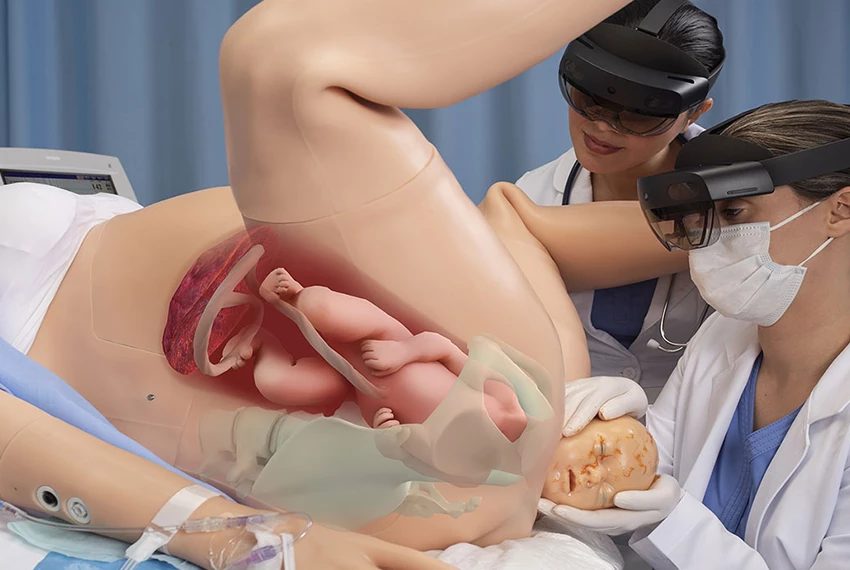
Observe clinical intervention in real-time.
Obstetric MR, VICTORIA’s internal network of sensors, and the powerful UNI® control software work together to provide learners with real-time visual feedback. Learners can study the rotation of the pelvis and the fetal shoulder during McRoberts and suprapubic pressure maneuvers as they perform them. It is an entirely new way to observe and understand clinical cause and effect through hands-on practice.

